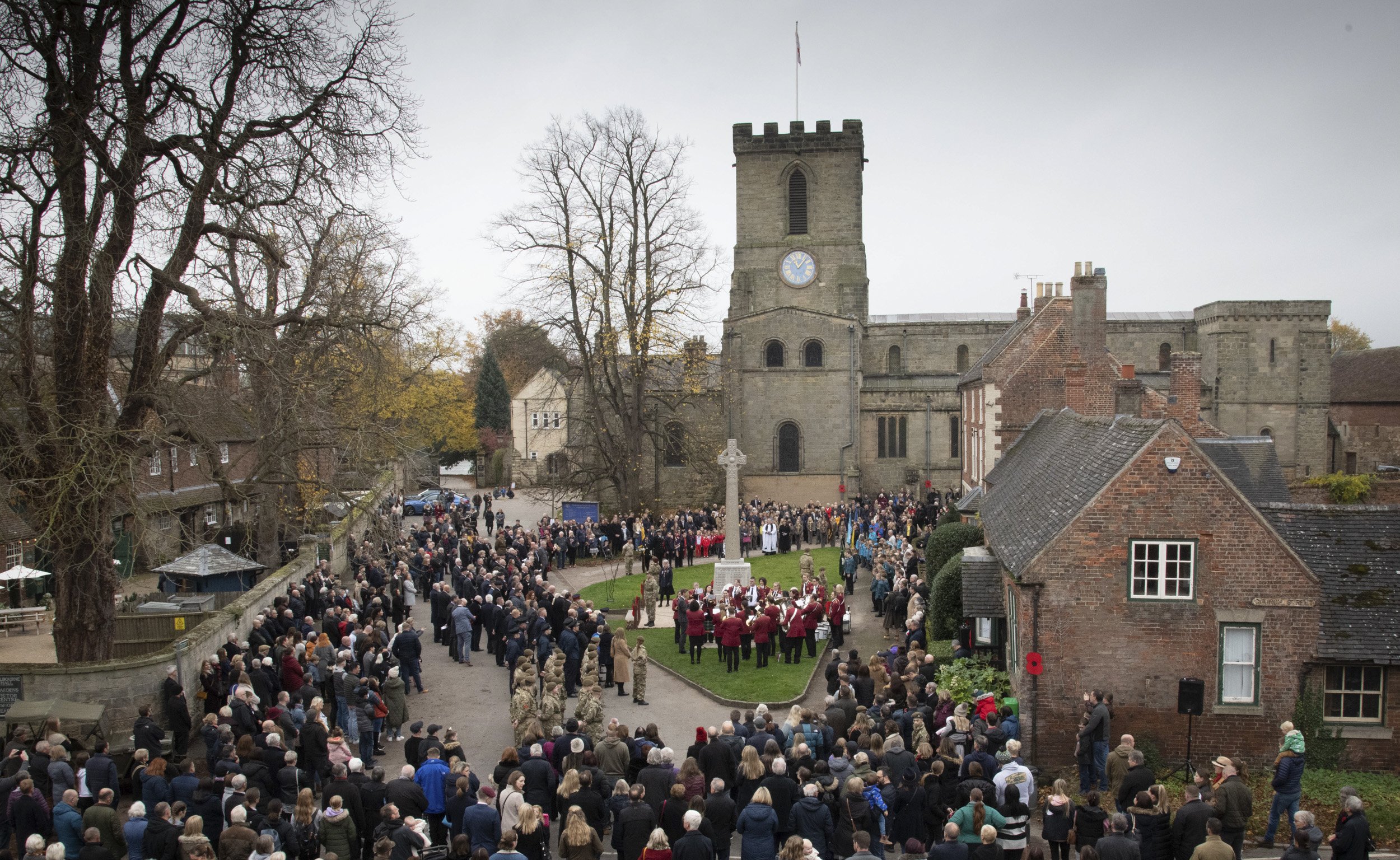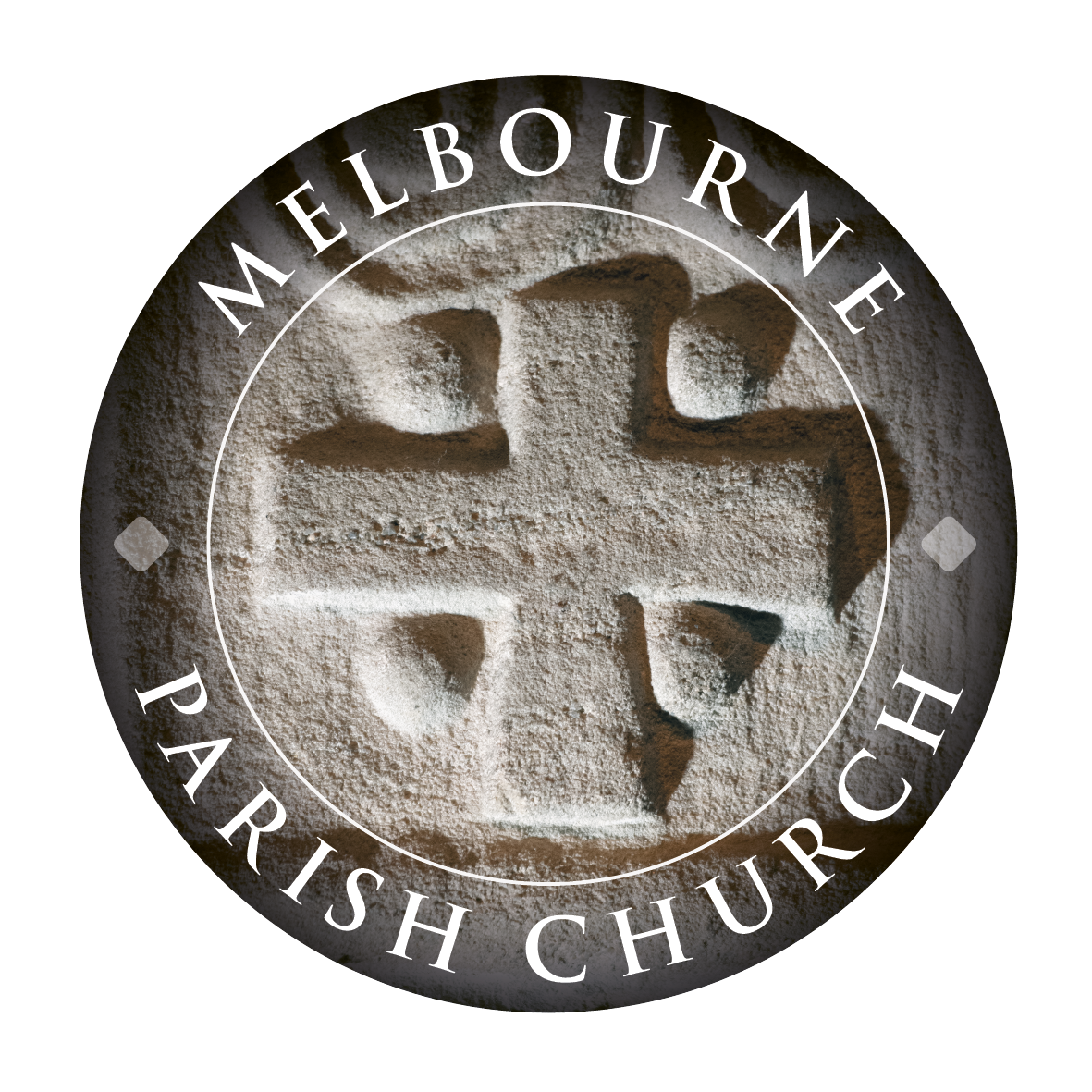
The church building
The story of Melbourne and its parish church is a long one, much of it unknown.
There was a church here when the Domesday Book was compiled in 1086. We know nothing of that church, but, with important Anglo-Saxon remains nearby at Breedon and Repton, it was possibly a substantial building.
In the long course of Melbourne's story, some person of wealth and influence replaced that church early in the twelfth century with this magnificent building. Who that person was is a matter of conjecture, and why so large and imposing a church was built in Melbourne is a mystery.
Who built the church?
Mystery surrounds the building of this notable church. One long-held theory suggests the first Bishop of Carlisle built it. When King Henry I (reigned llOO~ll35) founded the diocese in 1133, he presented the church at Melbourne to Adelulf (or Aethelwulf), its first bishop. Since Carlisle was not a safe place to be at that time because of constant border warfare, it has always been assumed that Adelulf sought safety here in his southern base when Carlisle was captured by the Scots in 1136, and that he built himself a church worthy of his status.
Melbourne Church does indeed have the feel of a 'miniature cathedral' about it, and we know that thirteenth-century bishops used it as such when they were given permission to ordain their priests here. The building of the church would therefore have fallen conveniently into the years 1136 to 1156 when Adelulf is thought to have been resident here.
This theory has been questioned, however, both by research into the life of Adelulf and by a closer look at the highly unusual layout of the church. Doubt has been cast on the assumption that Adelulf came south, since there is evidence to show that he simply remained where he was and acted as a Scottish bishop.
Church architecture
An explanation of the size and grandeur of the church can be sought from its features. A glance at the upper level of the building shows an unusually elaborate arrangement. At the back of the church (west end) there is a gallery, and along each side there are walkways. These continue around all four sides of the crossing beneath the central tower, the final link being an upper chancel at the east end. Access would have been through what is now the central window, and the outline of the upper chancel is clearly visible outside the church.
Why does the church have this rare two-storey feature? The answer to this may lie in the second theory of its building, which suggests that it was built as a royal church by Henry I as part of his manor at Melbourne. If this was so, then the west gallery was a 'royal pew' and the upper chancel was for the King's use. Therefore this church was already standing (substantially as we see it today) when Adelulf received it from the King in 1133.
We cannot be certain which of these theories is correct, nor do we know if there are other reasons to explain why Melbourne Church was built in such a grand manner. Whoever was responsible has left us a splendid example of twelfth-century architecture, and the changes that have taken place down the centuries have not altered its outstanding qualities.
The west end is massive, with its fine door moulding and two low towers. The nearness of the tithe barn prevents a long view of this, but the crowning of a parish church with three towers was a unique extravagance. The east end of the church originally had a triple apse, that is, three rounded ends. This was a feature of early Norman churches, and traces of these can be seen both inside and outside the church. We can be grateful to those who altered the east end in later centuries for leaving it rather untidy. This way we can easily visualise what was there before.
In outline the plan of the church is 'cruciform'; in other words, it is built in the shape of a cross. The chief symbol of Christian belief is thus used to good effect, since all worship takes place 'within' the cross of Jesus.
The Church and its place in the town
Two well-known people have their place in the Melbourne story. Thomas Cook, the founder of modern tourism, was born here in 1808; and in 1837 Lord Melbourne, Queen Victoria's first Prime Minister, gave his name to the small Australian settlement which is now a great city.
Market gardening, shoe making and light engineering have all played their part in the story of Melbourne, now a town of about 6,000 people. Melbourne Hall has an essential place also, with society and political figures of the eighteenth and nineteenth centuries gracing its rooms. Pride of place, however, must belong to this church. Many generations of Melbourne folk have gone to worship between these massive walls and columns for nearly nine centuries. Today there is a lively congregation which uses the building to the full and which takes its Christian witness and the responsibilities of maintenance seriously.
To see the church and its surroundings from the air, click here.
The Organ
The Bells


